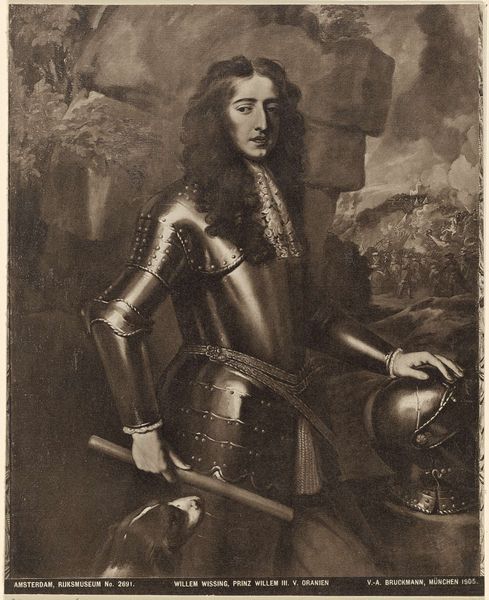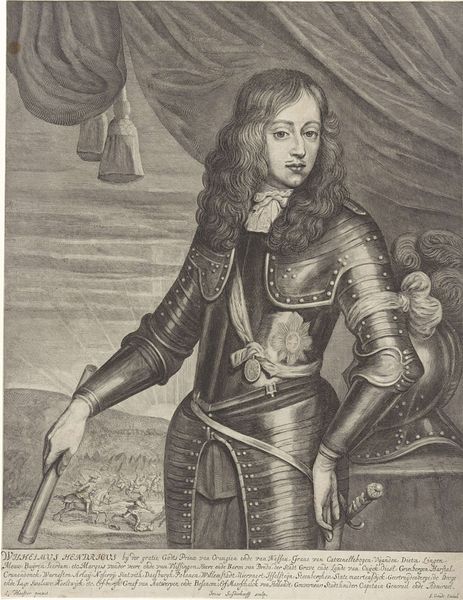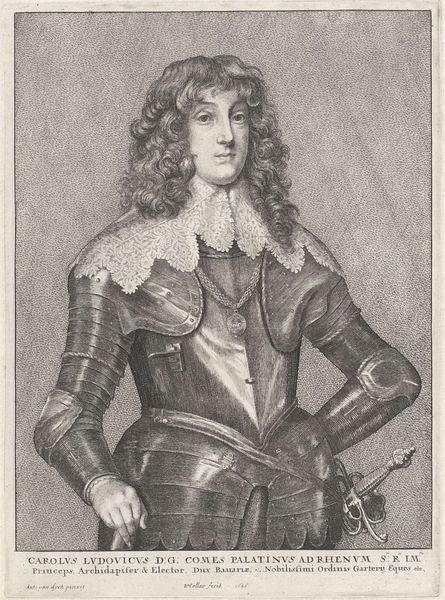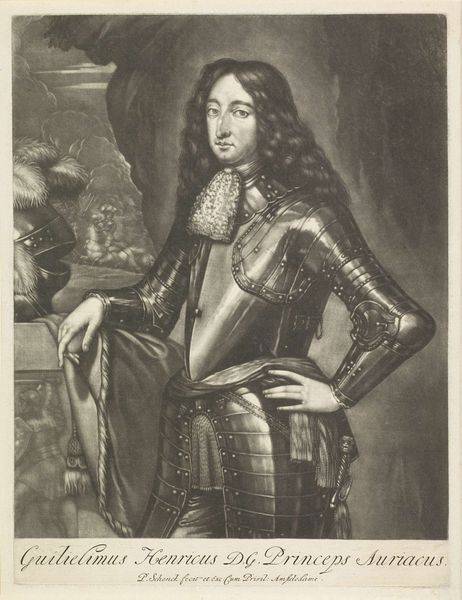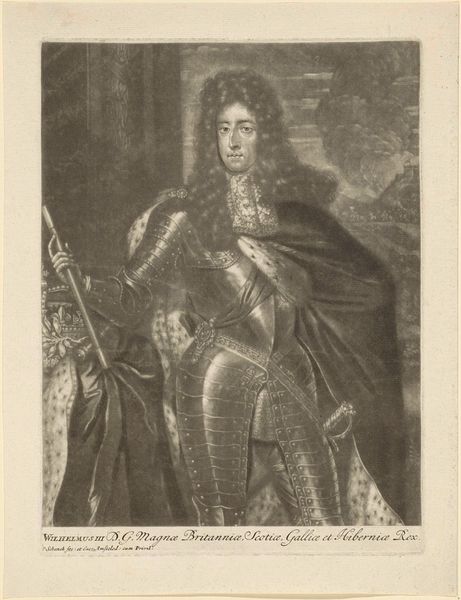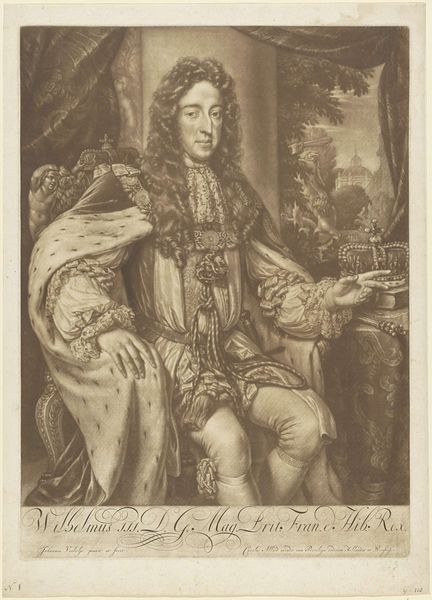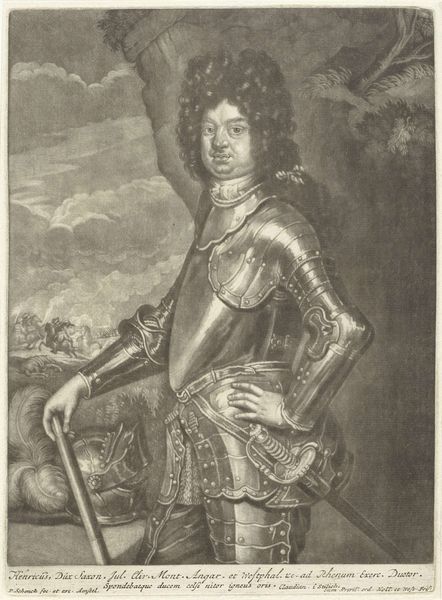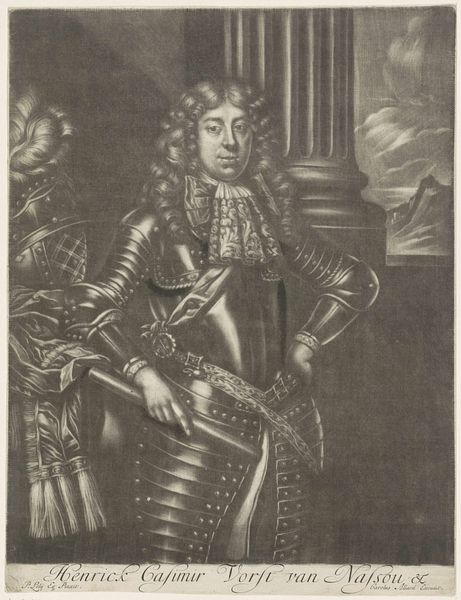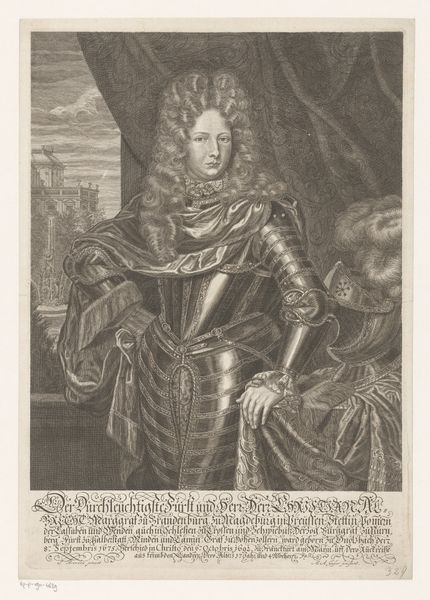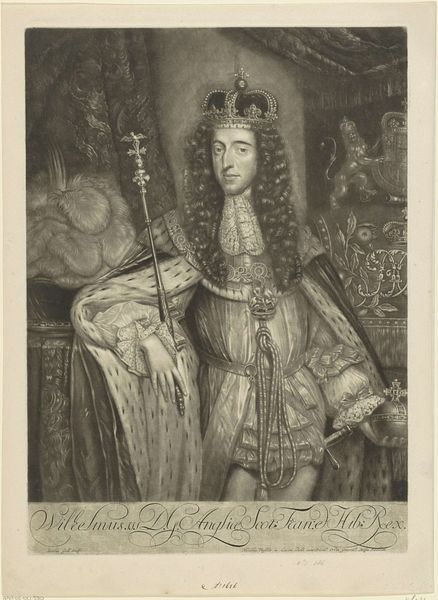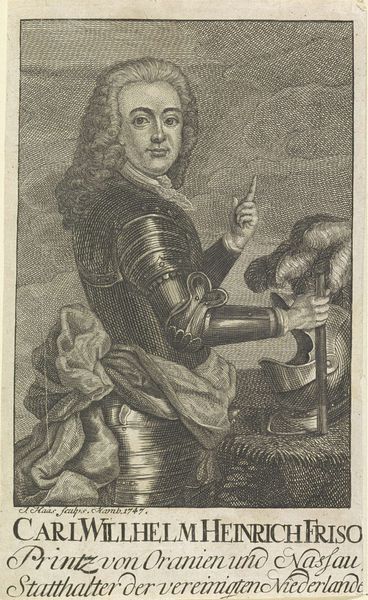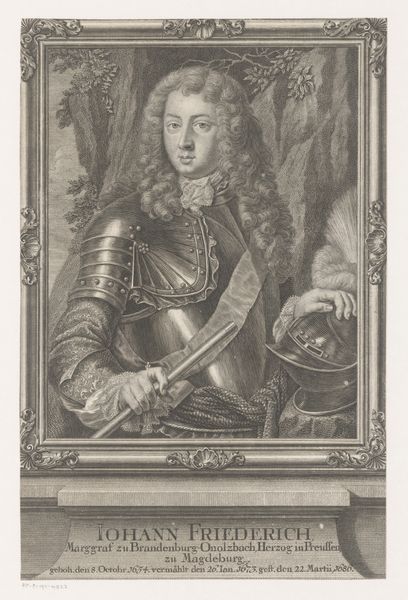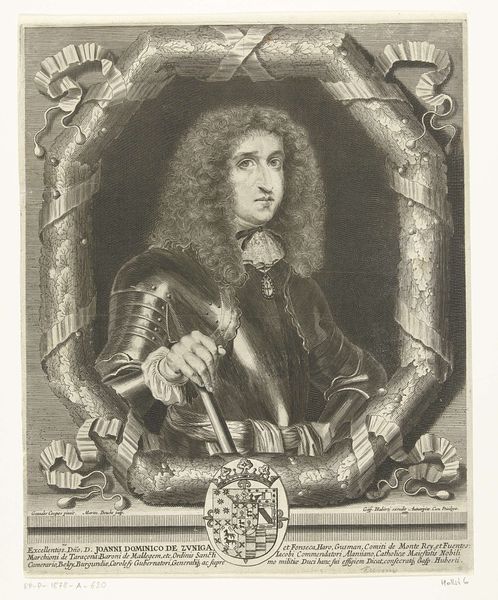
print, engraving
#
portrait
#
baroque
# print
#
caricature
#
portrait reference
#
history-painting
#
engraving
Dimensions: height 341 mm, width 249 mm
Copyright: Rijks Museum: Open Domain
Curator: This engraving, simply titled "Portret van Willem III, prins van Oranje," is from between 1670 and 1749 and resides here at the Rijksmuseum. The artist, unfortunately, is anonymous. It presents a formal portrait in the Baroque style. Editor: Oh, the poor guy looks absolutely drowning in metal! All that heavy armor… and then those melancholy eyes. It gives off a slightly tragic air, don't you think? Like a gilded cage. Curator: Well, portraits of rulers at this time were often carefully constructed images. Armor signified military strength and leadership. But of course, what we perceive now, separated by centuries, might differ from its intended reception. Editor: True. I'm more taken by the setting. It looks like he’s in the middle of a very gloomy battlefield. Curator: The artist employed specific conventions to legitimize power. Notice the battle raging behind him; it symbolizes his role as a protector and commander. The dog at his side also contributes to this portrait as an icon of loyalty. The symbolic program communicates more about the office than the man, perhaps. Editor: So less about the human and more about the political propaganda. I do find that interesting, the way artists had to work with and within those constraints, playing a part in weaving the narratives. Did anyone really buy into all this imagery? Curator: The effect, while debated, undeniably shaped the understanding of power during that era. Prints like these helped disseminate ideas of leadership. They influenced political opinion. We see it circulated among those who had influence, and certainly influenced some. Editor: Thinking about it, I'd be sweating buckets in all that metal... and there's no exit from this job either! Though as art, the print itself is pretty special; the detail they squeezed in through engraving is incredible. Look at the line-work and the little dog is really charming. Curator: Indeed. Even through our contemporary lens, despite its primary function as a historical artifact, it resonates aesthetically. Editor: Well, I’m glad we got to delve beyond the armor and the battlefield into that interesting history. Curator: Yes, perspectives shape appreciation and deepen understanding of a visual message, especially as meanings shift across time.
Comments
No comments
Be the first to comment and join the conversation on the ultimate creative platform.
